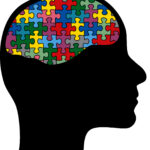
Chandra Sripada, M.D., Ph.D., and colleagues tested a total of 750 children and teens, 275 with ADHD and 481 others without. A peek inside their brains, using MRI, revealed a key difference in brain architecture. It was found out that the brains of those diagnosed with ADHD lag behind others of the same age in how quickly their brain form connections within and between key brain networks.
Other research supports this claim that children with ADHD are developmentally delayed 30% behind other children their same age. So if you have an 11 year old child with ADHD, his or her real age is more like 9 years old.
Children With ADHD
Hundreds of fMRI brain scans of these children with ADHD and those without identified key connections between brain networks that matured more slowly in ADHD brains. The less mature connections between brain networks are responsible for internally-directed thought (such as daydreaming) and externally-directed tasks. This lag in connection development may explain why children with ADHD are easily distractible and struggle to stay focused.
The findings are also relevant regarding the longitudinal course of ADHD from childhood to adulthood. It may be noted that some children and teens “grow out” of the disorder, while for others the disorder persists throughout adulthood. Future studies regarding brain network maturation in ADHD could clarify the neural basis for this difference.
Sripada also explained that in the last decade, functional medical imaging has revealed that the human brain is functionally organized into large-scale connectivity networks. These networks, and the connections between them, mature throughout early childhood all the way to young adulthood.
Future research will examine this phenomenon to find a true biological marker, or neuromarker, for ADHD, examining the individual components of the networks that have the maturational lag.
Sripada also notes that similar MRI studies could be used to examine other disorders with roots in brain connectivity. For instance, autism whose evidence suggests stems from over-maturation of some brain networks, and schizophrenia which may arise from abnormal connections.
Contact Us
"*" indicates required fields
